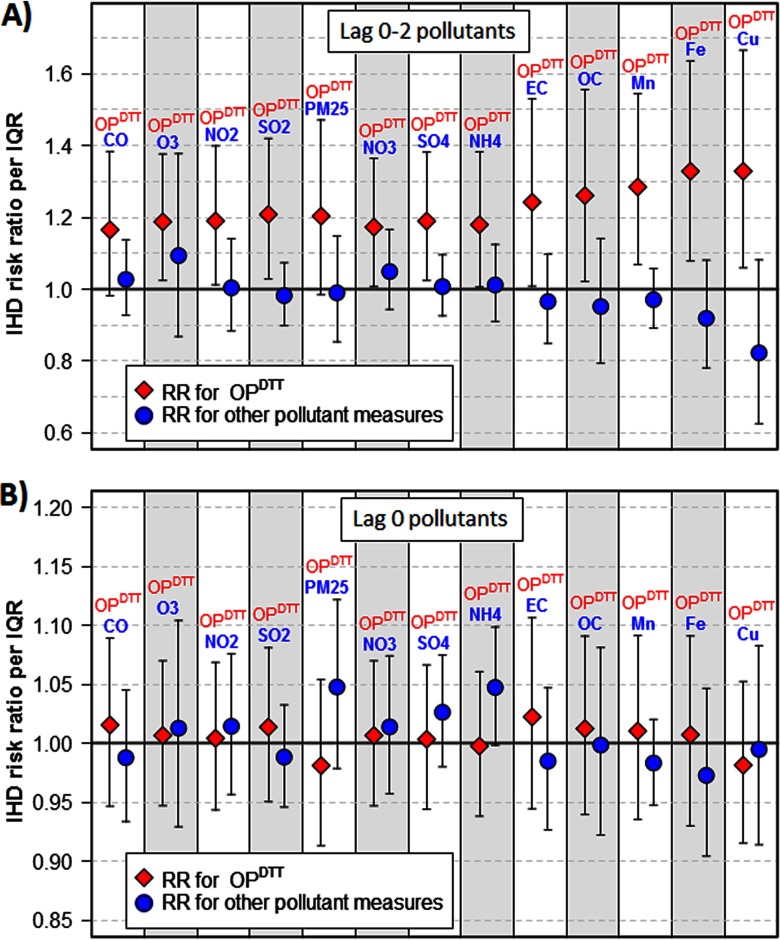Figure 4.
Ischemic heart disease (IHD) risk ratios for the oxidative potential of water-soluble as measured by the DTT assay () and other pollutant measures in bipollutant models, for (A) lag 0–2 pollutants and (B) lag 0 pollutants. Risk ratio for (diamond markers) are per interquartile range (IQR) of (); risk ratio for all other pollutant measures (circular markers) are per IQR of that particular pollutant. Note: , carbon monoxide; , copper; , elemental carbon; iron; , manganese; , ammonium; , nitrogen dioxide; , nitrate; , organic carbon; , ozone; , fine particulate matter; , sulfur dioxide; , sulfate. , , , , , , , and are components of .

